Almost every company faces the question of when it is time to rebrand their business. Although rebranding can bring about numerous benefits, it is a decision that should be carefully considered. Simply getting tired of your current branding is not reason enough to rebrand it. The process of rebranding demands a dedication of time and resources, and a lot of it. So, let’s align on this here, once and for all, doing an unnecessary, unjustified and half-baked rebranding is a waste of time and money. It’s dangerous like in the case of Lyle’s Golden Syrup.
There are many motivations for businesses to undergo rebranding with surveys show that updating brand identity is one of the most commonly cited reasons for rebranding, as reported by 57% of marketers.
What are the signs that’ll make you to consider rebranding your business? Do you need a complete rebrand or just a simple brand refresh? Are their any practical strategies, guides and examples of rebranding?
What Is Rebranding?
Rebranding refers to changing how your organization is perceived and its overall corporate image. It’s a marketing tactic where a well-known brand takes on a new name, slogan, logo, or look, its vision and mission, etc. The goal of rebranding is to create a unique identity for the brand and increase brand awareness, making it stand out from competitors in the industry.
More and more businesses are rebranding to stay competitive in their industries. A study by UpCity has found that 51% of businesses have undergone rebranding since Covid-19. There are two main approaches of rebranding: proactive and reactive.
- Proactive rebranding is when a company sees new opportunities for growth, innovation, entering new markets, or reconnecting with its current customers.
- Reactive rebranding happens when an organization needs an unexpected change of its brand due to unforeseen circumstances or new challenges triggered often by a crisis.
The extent of rebranding required can vary based on factors like the timing of your last brand update and the reason for rebranding.
Rebranding can be both Partial and Total.
- Partial rebranding refers to updating a company’s brand identity while maintaining essential, recognizable elements. This approach is commonly chosen when organizations aim to update outdated aspects of their brand image or expand into new markets and audiences without completely changing their current identity.
- Total rebranding involves an overall brand identity transformation, including changing the name, updating messaging, and refreshing imagery. This usually happens when two companies merge and experience significant changes, such as new objectives or a completely different focus. The rebranding process usually involves changing the name, updating messaging, and refreshing imagery.
Rebranding may seem challenging and expensive, but it can set your business apart from its competitors if done right. A successful rebranding can help better connect with customers’ needs and values.
Signs It’s Time to Rebrand
Recognizing the signs that suggest it’s time to rebrand your business is important for remaining competitive and in tune with your customers’ desires. Whether it’s because of changes in consumer trends, obsolete branding, or the necessity to stand out from rivals, being aware of when to rebrand could be the secret to refreshing your business and boosting future expansion.
Below are the main signs alerting you that it’s high time to rebrand your business:
Negative Public Perception
Rebranding your business is necessary once there is a negative public perception. When your brand is linked to unfavorable views, such as unsatisfactory customer interactions, controversy, or outdated messaging, it can damage your reputation and affect your profits.
In the context of negative public perception, rebranding becomes a powerful tool for the following:
- Crisis Management. Once a business faces a crisis harming its image, rebranding can help show its commitment to making positive changes. This brand strategy includes fixing the problem and then introducing a renewed brand to potential customers, highlighting the company’s efforts to improve and regain trust.
- Damaged Reputation Fixing. Fixing your damaged reputation typically involves renewing the existing brand. Rebuilding trust requires a completely new brand strategy, particularly when facing issues like product recalls, ethical lapses, or other misconduct. This fresh direction showcases a dedication to rectifying previous issues and rebuilding customer trust.
Note that just changing the company name and logo is not enough to get rid of the negative perception of your brand. You need to take a comprehensive look at your business strategy. Garry says that company name doesn’t matter and yes, we agree with that (partially).
For example, in 2018, Uber went through a successful rebrand. It was necessary to distance itself from its negative reputation, resolve an identity crisis, and show its dedication to a new, better culture. The renewed brand narrative highlighted how Uber’s culture had evolved, with an emphasis on both drivers and passengers. There is always the question – did it?
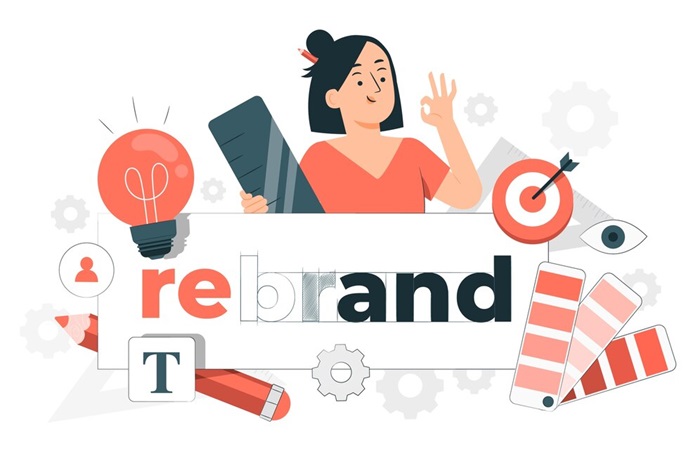
Damaged Brand Image Due to a Negative Incident
Overall, negative incidents can significantly damage your brand’s reputation, leading to a loss of customer trust. Your brand image can be damaged because of a single incident. In such cases, rebranding can be a valuable strategy to separate the company from the negative incident and show a commitment to moving forward positively.
Through rebranding, you confront the issues directly, showing a dedication to making things right and being transparent in their actions. By refreshing elements such as the name, logo, and messaging, you can communicate a fresh start and emphasize a renewed emphasis on quality and honesty.
Evolving Market Trends
Rebranding your business can be a strategic decision to keep up with evolving market trends. Market trends constantly change. So, each successful business may refresh its brand design to remain relevant. First and foremost, it is important to conduct comprehensive market research to grasp what customers desire as their preferences change.
Expanding to New Markets
Every business that aims for international recognition needs to expand to new markets. Each market has its own rules and specifications. To adapt your business to new markets, you need to undergo a specific rebranding process.
For example, your brand name or logo that is successful in your country could have unfavorable or confusing meanings in another. To expand to a new market, you need to customize your messaging and visual image to match local traditions, values, and preferences, thus making the brand more relatable and attractive to global customers.
Moreover, by refreshing brand components like slogans, packaging, and marketing tactics, you can guarantee that their fundamental values are clearly reflected in all markets.
When NOT to Rebrand
Branding can bring many benefits to your company. However, you need to be careful while deciding on rebranding your business.
Even Coca-Cola, one of the most recognizable and successful companies worldwide has had failures while deciding on their rebranding strategy. For example, once they attempted to consolidate all their Coca-Cola subbrands into ‘One Brand’ packaging, customers found it too easy to mistakenly choose the wrong variant from the fridge. Later, they adjusted their rebranding approach to make navigation easier for consumers.
There are certain cases when you should NOT rebrand your business. Before deciding to rebrand, consider the following situations where it’s better to hold off:
Temporary Challenges
If your business is experiencing temporary challenges such as a drop in sales or receiving a negative review, rebranding may not be the best solution. It’s often more effective to solve the specific problem rather than completely rebranding your brand.
Competitor Rebrandings
Copying the actions of your competitors is not a good way to stay in the game. If one of your competitors has rebranded their business, doesn’t mean you need to follow them. You need to consider your business signs for rebranding.
Boredom of the Current Branding
Sometimes, things can become monotonous. You may be exposed to your branding every day for years without any alterations, but this doesn’t necessarily mean a rebrand is necessary. If your brand is well-known, easily recognizable by your customers, and accurately displays the mission and vision of your company, then there may be no need for any changes.
Insufficient Resources
Rebranding considers costs for your business. On average, businesses spend 10%-20% of the marketing budget on rebranding. However, the budget is largely based on the complexity of the rebranding process. The more complex it is, the larger costs are required. So, always consider your budget before rebranding to make sure you have sufficient resources.
Unclear Objectives
Before rebranding, set clear and measurable objectives aligning with your marketing strategy and long-term business goals. Clear objectives guarantee that any changes made serve a purpose and add value to your brand’s development and prosperity. If these objectives are not well-defined, fine-tune your approach and concentrate on improving your existing brand rather than starting a rebranding process without a clear plan.
Rebranding vs. Brand Refresh
Once you have decided to update your brand, it’s time to think about refreshing or fully rebranding it. These two terms sound similar, but they have core differences. A brand refresh refers to modernizing the brand while keeping the core identity and values unchanged. It is similar to the partial rebrand. Simply put, brand refresh improves what you have already built. It can include:
- Applying new brand colors.
- Slightly changing the brand logo.
- Using new fonts.
- Updating company website, etc.
A bright example of a brand refresh is Instagram’s logo update, adding a contemporary touch that better suits a brand moving beyond just sharing photos.
Rebranding is more about building the brand from scratch. It can include:
- Creating a completely new logo.
- Defining new brand vision and mission.
- Changing the name, etc.
You can decide which business strategy to choose based on your company goals. Note that the brand refresh is less costly and less time-consuming. For example, you can implement a brand refresh in 1-2 months, while rebranding can take up to 6 months depending on the difficulty.

Strategies for Rebranding
A successful rebrand is the result of using strategies that align with your business needs. Wonder how to rebrand a company? Here are some effective strategies to consider when rebranding your business from scratch.
Research and Analysis
First things first. A good rebranding starts with a thorough research and analysis.
- Identify your strengths and weaknesses. This will help you increase your chances of success and reduce the risk of harming your company’s market share.
- Gather diverse opinions inside your company. Consult with your employees and stakeholders to find out what they think and what can suggest.
- Perform competitor analysis. This will help you find out their strengths and weaknesses to be able to fill the existing gaps and open up new growth opportunities. This will help your brand stand out in the market.
- Conduct market research. It will help you explore the market trends that can influence your new business strategy.
- Consider customer insights. Conduct surveys, polls, and focus groups to understand how your brand is perceived by your audience and what you can improve.
Developing a Clear Brand Strategy
Once you have researched the market and your competitors and know what your customers think about your brand, it’s time to define what you wish them to think. This can be achieved through a clear and well-defined brand strategy.
- Define new brand vision, mission, and core values. While developing a new brand strategy, make sure that your vision, mission, and values align with your business goals. Your mission and vision are lenses through which the public, including potential customers, learn who you are. If it is not unclear or appealing, people are less likely to purchase from or engage with your business.
- Determine your new target audience. Normally, your target audience may change over time. It is important to update who your target audience currently is and make sure your values resonate with them. STP marketing can serve as a valuable tool to determine your target audience and customer personas.
- Define measurable goals. A clear brand strategy is based on measurable goals. The goals can include increasing brand awareness, reaching new markets, boosting sales, increasing customer loyalty, and more. The clearer the goals, the higher the chances to enhance the rebranding effectiveness.
Developing a New Brand Identity
After defining your new brand strategy and learning who your target audience is and what they need, it’s time to develop your new brand identity. It includes:
- Crafting new brand messaging. Your rebranding strategy will result in messaging that captures the essence of your brand’s growth. The aim is to develop a unified narrative that is conveyed through various elements, including packaging and website design.
- Visual identity redesign. The brand messaging strategy sets the foundation for the visual rebrand. Expand on these concepts and create unique brand visuals that evoke the desired emotions in your target audience. Update our logo or create a new one, and develop new brand color schemes, typography, and other visual elements that communicate your brand messaging.
Crafting a Marketing and Communication Plan
Another key rebranding strategy is crafting a marketing and communication plan to launch your company’s rebrand to the public. This process includes:
- Prepare a press release. It is recommended to announce your rebrand to the public with a press release highlighting the changes and their main goal.
- Update your website. Refresh your website design, content, and visuals to match the rebrand. Keep a consistent user experience (UX) that aligns with the new brand messaging. Ensure that the website is optimized for search engines with updated keywords, meta descriptions, and alt text.
- Update social media platforms. Update the company’s social media platforms with the new logo, cover images and brand messaging.
- Inform the customers about the rebrand. Let your customers know about your rebrand in the first place by sending them appropriate emails. Explain to them the changes, outlining how they will benefit from them. Personalize the message to show customers that they are highly valued.
Developing a new brand identity and communicating it to the public is a key step that can be challenging and time-consuming. Using digital marketing services can assist you in reaching your desired goals more effectively.
Monitoring and Adjusting
After implementing your rebrand strategy, how can you know whether it is successful? With the help of monitoring and adjusting. You can use tools like Google Analytics and Google Trends to monitor your brand and find any issues to adjust. Monitor metrics like website traffic, social media interactions, and customer input to evaluate how well your rebranding strategy is working. Be ready to adjust your tactics based on immediate customer feedback.
Rebranding plays a key role in the journey of many companies and for good reason. A strong brand directly impacts a company’s revenue, and rebranding signals that your brand is growing and adapting to the latest market trends.
The rebranding process requires significant time and resources. If your business has the signs that it is time for a rebrand, having clear objectives, detailed brand guidelines, and a central source of truth for all content is vital for achieving success.
Examples of Successful Rebrands
Rebranding is a powerful marketing tool. It comes with both risks and rewards.
Here are some of the most successful rebrands in history and the lessons you can take from them:
Meta
In 2021, took place the famous rebrand of Facebook to Meta. This rebrand reflects the shift of the platform from a social media to a metaverse-focused company, emphasizing virtual reality and immersive experiences. While Facebook stays as Facebook, the global transformation of the original company indicates an already established fact of its transformation from just a social network to something much bigger.
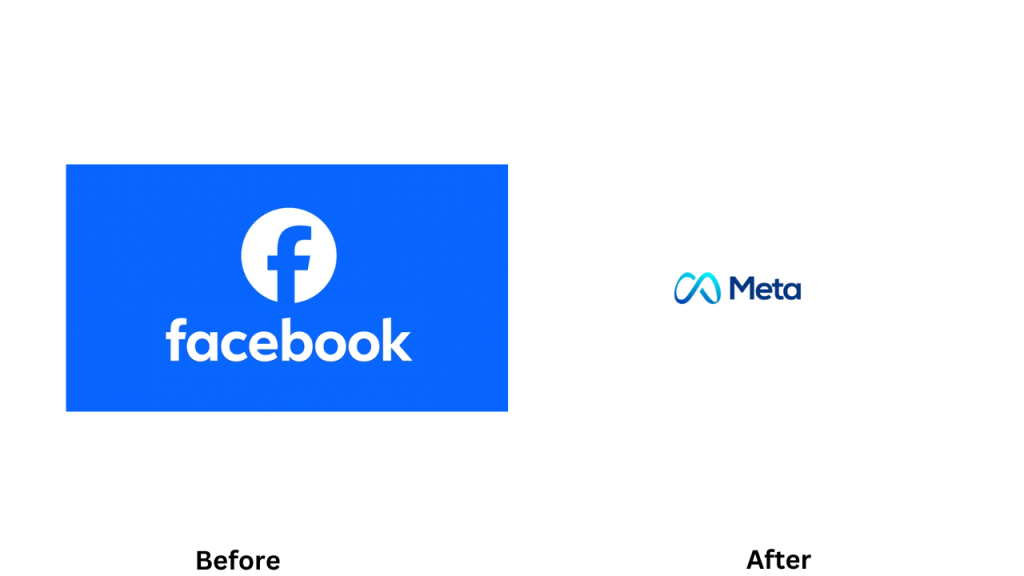
This rebrand highlights the importance of staying relevant and innovating in response to consumer needs.
Dunkin’
In 2021, Dunkin Donuts rebranded itself to Dunkin’. The rebrand aimed to highlight a shift in focus from mere donuts to a larger assortment of food, including breakfast items and coffee.
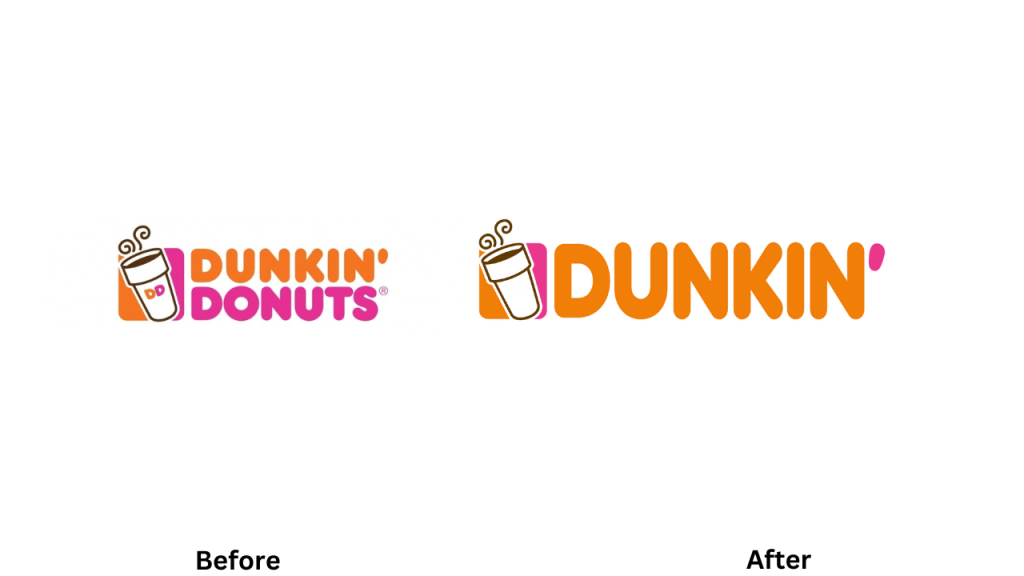
They changed the overall visual identity of the brand, including a new logo with an updated font. However, the color scheme of the brand remained the same.
This rebrand allowed Dunkin’ to reach a broader audience and increase revenue.
Adobe Creative Cloud
In 2020, Adobe went through a total rebrand aimed at making the product portfolio easier to navigate and visually appealing. It included a redesigned all-red logo, a colorful gradient for the Creative Cloud logo symbolizing creativity, and the introduction of 3-letter mnemonics and color-coded categories for product logos to improve organization. While Adobe stays as Adobe, their total rebrand of the the product line to indicate the “creative” and “cloud” , remove the corporate name signals shift of “separation”.
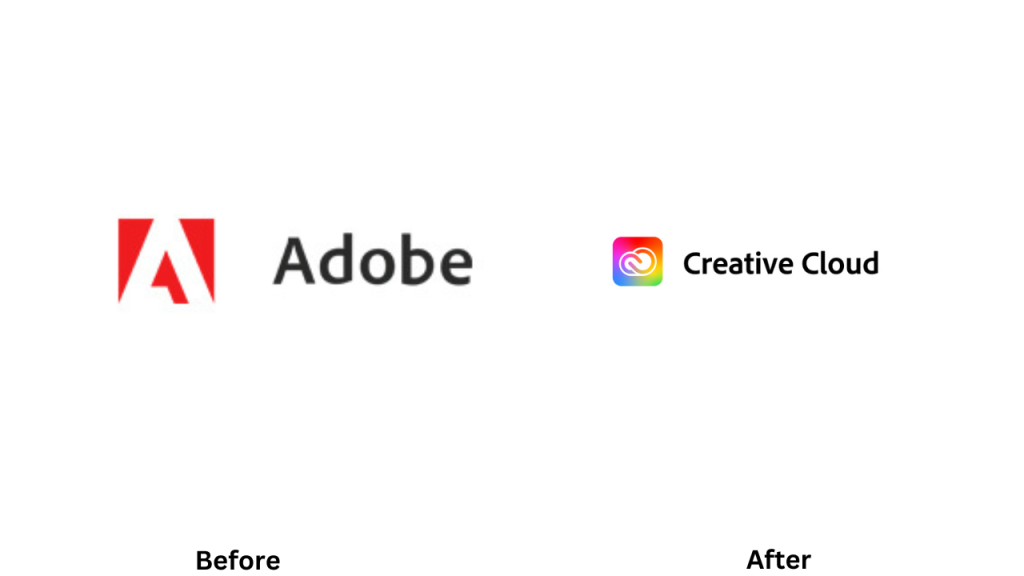
The new logos were in similar colors intended to help users better navigate the extensive range of over 50 products.
LEGO
The brand refresh and not a total rebranding of of LEGO is one of the most interesting ones. It focused on internal changes rather than visible changes.
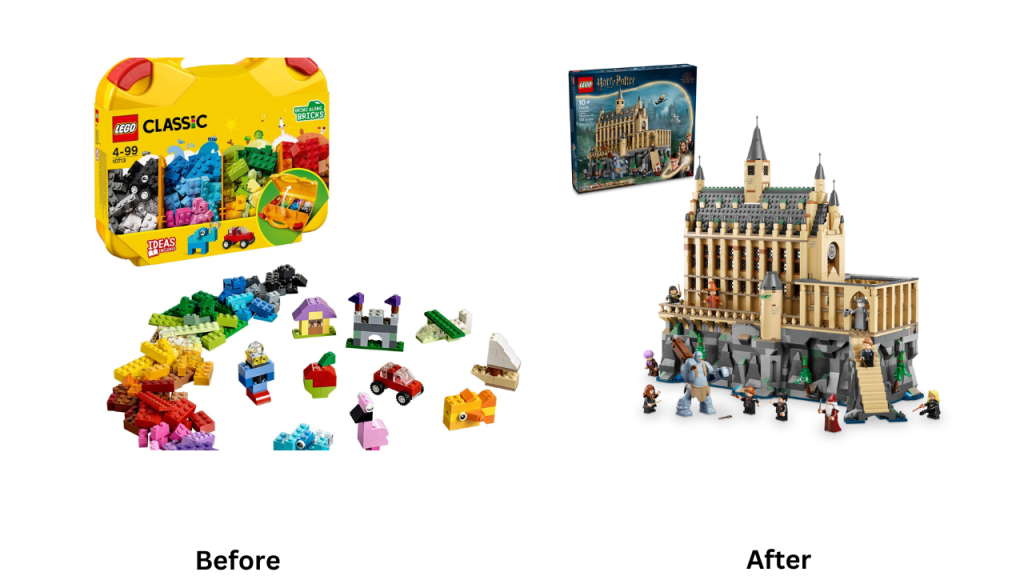
Lego specifically enlarged the brand’s presence in new digital channels, engaging kids and parents, and expanding its offerings to include movies, games, TV shows, and unique adult toys. They also created specialized digital channels to connect with fans of specific franchises like Star Wars and Harry Potter. This strategy led to a significant increase in sales.
Mailchimp
In 2018, Mailchimp undertook this brand refresh after losing a large chunk of the marketing to competition. The company introduced a new logo with a refreshed font, an image of Freddie, and the famous “banana yellow” color, which helped Mailchimp stand out.
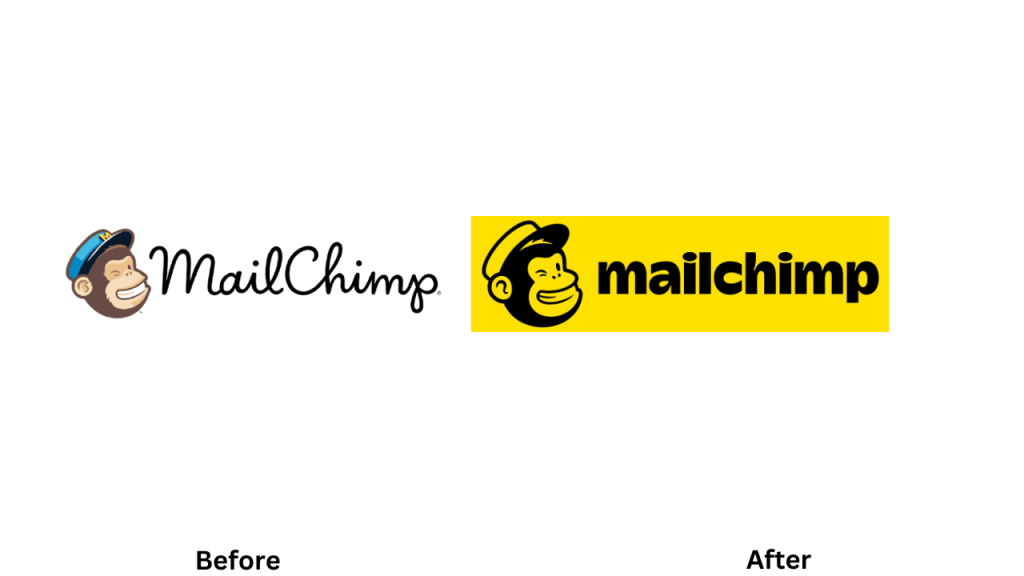
The rebrand was quite successful as Mailchimp also focused on enhancing its brand story through sponsored podcasts and marketing campaigns, leading to significant success.
Partnering with a B2B podcast company can take rebranding efforts to the next level by producing high-quality, engaging content that resonates with industry professionals and potential clients. Podcasts offer a unique way to share a company’s evolution, values, and vision in an authentic and conversational format. By leveraging expert storytelling and targeted distribution, businesses can strengthen brand recognition, build trust with their audience, and establish thought leadership in their industry.
McDonald’s
McDonald’s, the most famous fast food chain had not one but multiple refreshes. The goal was to stay relevant in a shifting market, especially after dealing with public relations challenges.
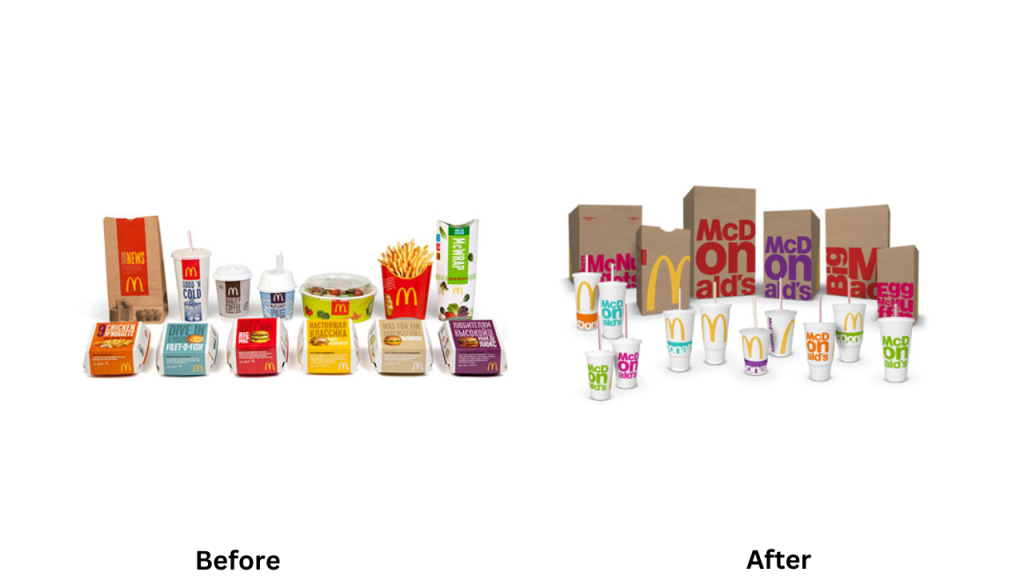
The company shifted its focus towards promoting healthier menu options and a commitment to locally sourced ingredients, altering its core messaging.
It also updated the look of its stores, packaging, and marketing materials, blending its familiar fun image with a refreshed, health-conscious approach to reconnect with consumers.
Mastercard
Mastercard’s rebranding history has had its ups and downs. However, its latest 2019 rebrand is a success. Or we can say so.
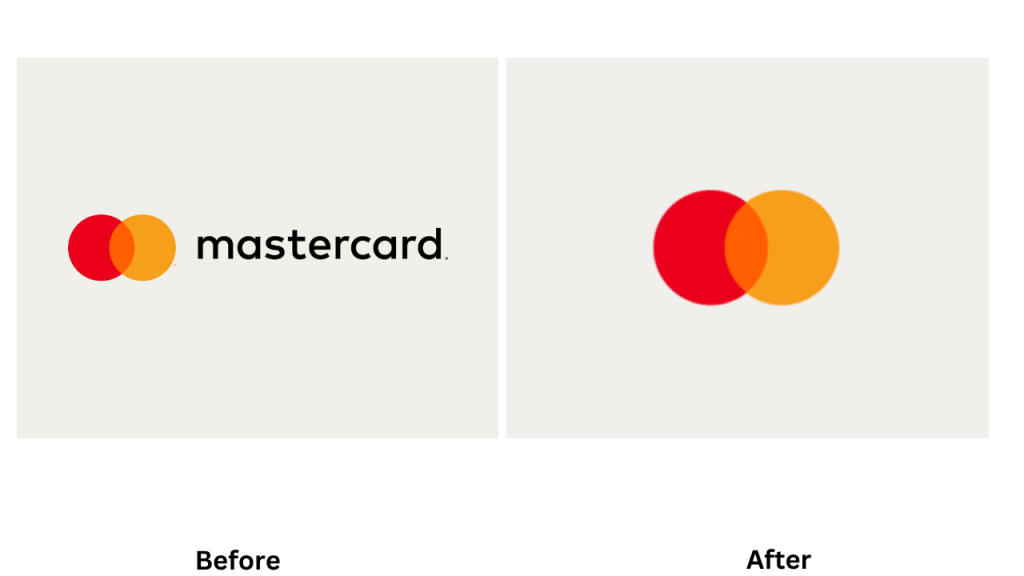
Mastercard modernized its brand identity by simplifying the design overlapping red and yellow circles. It changed the website, packaging, and logos solidifying its powerful and modern image.
Walmart
Walmart’s brand refresh in 2008 was one of the most impactful and successful in its history. The key was simplicity – the golden rule for crafting a memorable brand.
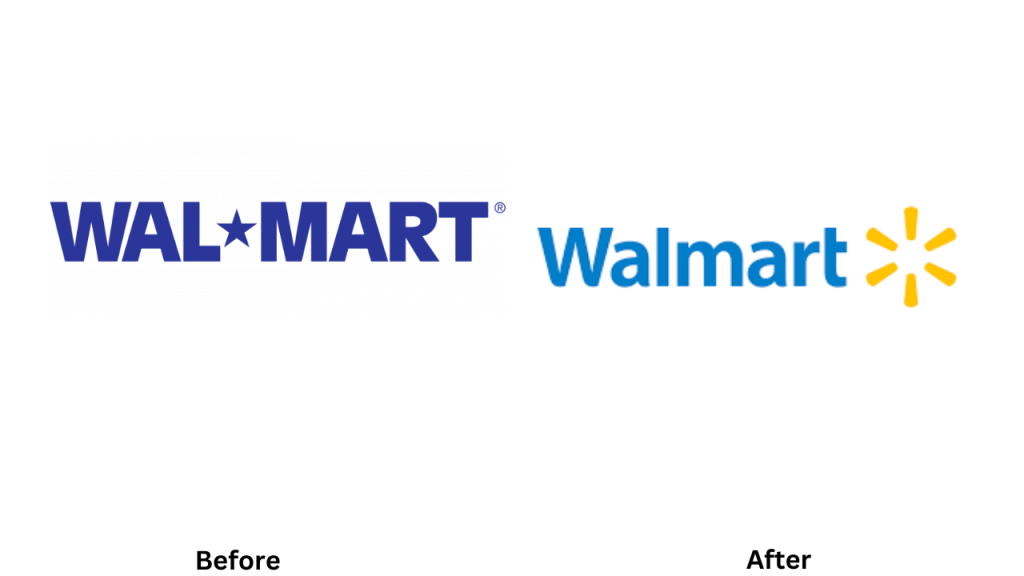
What did Walmart do? It introduced the iconic “Walmart Spark” logo and a new slogan, “Save money. Live better,” shifting focus to lifestyle benefits.
The rebrand helped Walmart maintain its market leadership and ensure its brand remains fresh and relevant years later.
Airbnb
Airbnb underwent a successful brand refocusing in 2014. The rebrand was aimed to match its expansion beyond affordable homestays, introducing the “Bélo” logo as part of its global travel platform ambitions.
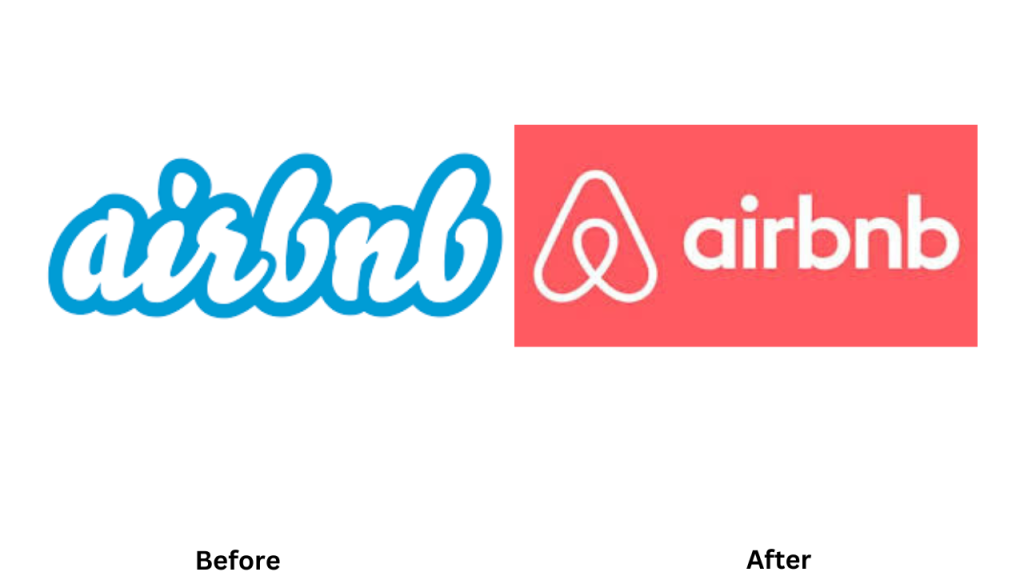
The key to the success was a simple user experience and high-quality visuals aimed at positioning itself as an alternative to hotels. The rebrand led to a significant increase in bookings and revenue.
X
When Elon Musk bought Twitter in 2023, he rebranded it to X in 2023. This was one of the most surprising and sudden rebrands in history. A lot can be said about its success or failure but time will tell. It’s mostly done to emphasize Elon’s global vision of “X”.
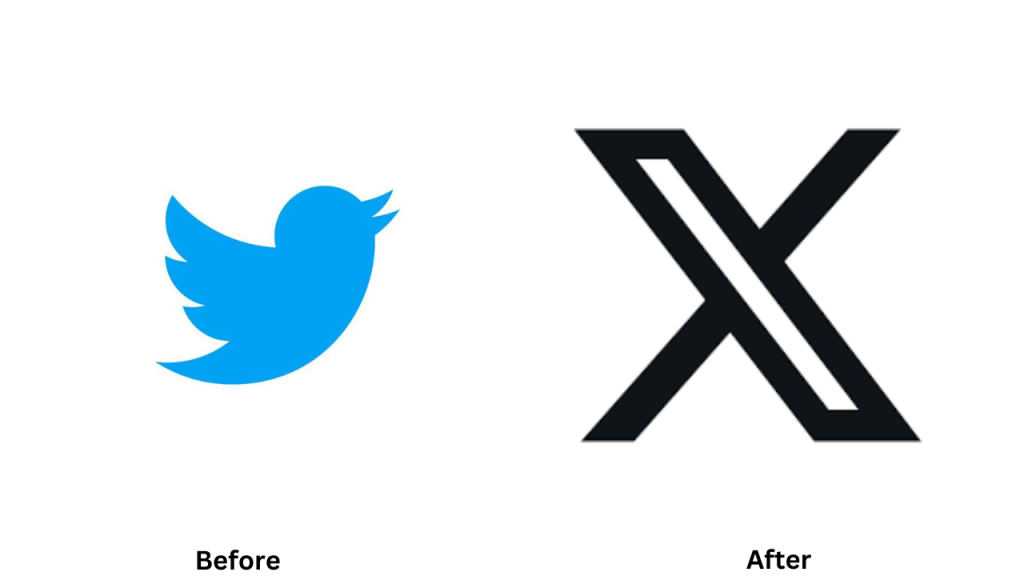
Elon revised the iconic blue logo of Twitter causing widespread discussions and confusion. However, the long-term results of this rebrand have yet to be seen.
The 2016 rebrand of Instagram is one of the most discussed ones. The alteration of its Polaroid camera logo was shocking for most users.
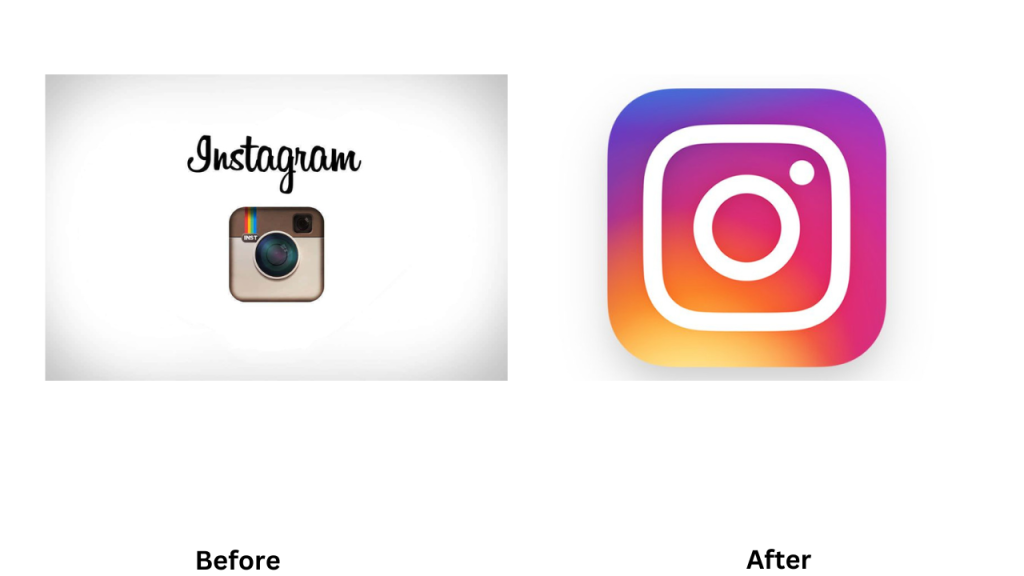
The idea of redesign came as Instagram had grown significantly, with over 400 million users and 80 million photos shared daily. With this change, Instagram wanted to reflect that it was more than a photo-sharing platform and has transformed into a multifaceted platform.
Saint Laurent
The 2012 iconic Saint Laurent rebrand marked a significant change in the famous fashion brand. “Yves” was dropped from the brand name, choosing simply “Saint Laurent,”.
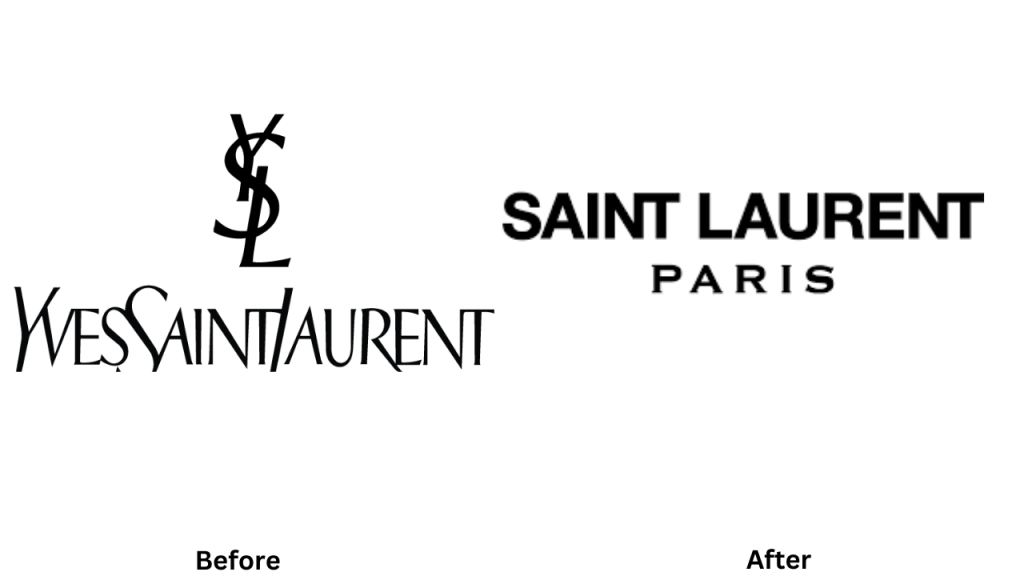
The brand introduced a minimalist aesthetic to revitalize the brand identity. The goal was to attract a younger and more modern audience while keeping the brand’s high fashion legacy.
Rebranding plays a key role in the journey of many companies and for good reason. A strong brand directly impacts a company’s revenue, and rebranding signals that your brand is growing and adapting to the latest market trends.
The rebranding process requires significant time and resources. If your business has the signs that it is time for a rebrand, having clear objectives, detailed brand guidelines, and a central source of truth for all content is vital for achieving success.